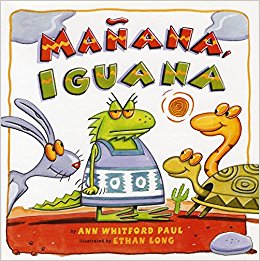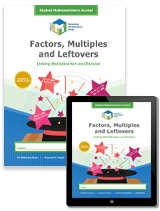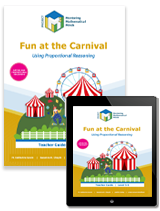Search Listing Name


product:
Project M3: Level 3-4: Factors, Multiples and Leftovers: Linking Multiplication and Division Student Mathematician's Journal + 1 Year License
The Student Mathematician’s Journal allows students to explore simulated or real-life problems and help them to think, write, and read like mathematicians. It encourages students to reflect on what they have learned in each lesson, think deeply about mathematics, and communicate in writing on worksheets.
In this unit students develop their number sense with a focus on a deeper understandin
product:
Esperanza Rising Tradebook (paperback)
Esperanza thought she'd always live a privileged life on her family's ranch in Mexico. She'd always have fancy dresses, a beautiful home filled with servants, and Mama, Papa, and Abuelita to care for her. But a sudden tragedy forces Esperanza and Mama to flee to California and settle in a Mexican farm labor camp. Esperanza isn't ready for the hard work, financial struggles brought on by the Great Depression, or lack of acceptance she now faces. When Mama gets sick and a strike for better working conditions threatens to uproot their new life, Esperanza must find a way to rise above her diffi
product:
Project M2 Level 2 Unit 1: Designing a Shape Gallery: Geometry with the Meerkats Student Mathematician Journal 1 Year License
The Student Mathematician’s Journal presents simulated or real-life problems that encourage students to think, write, and read like mathematicians. They are asked to reflect on what they have learned and communicate in writing on worksheets.
In this unit, students explore two- and three-dimensional shapes and the relationships among them. The reasoning and spatial-sense skills they use will help the

product:
Project M3: Level 5-6: Fun at the Carnival: Using Proportional Reasoning Teacher Guide + 3 Year License
In this unit, students are introduced to ratios, rates, proportional reasoning, similarity and congruence. Students explore ratio as a comparison of two quantities. They discover that if the ratio between the corresponding side lengths and angle measures of two figures is 1:1 (i.e., the measures are identical), then the geometric figures are congruent. They learn that for two figures to be similar, their corresponding side lengths must be in proportion and their corresponding angles must be congruent. Students also explore the relationship between congruence and similarity, learning that al

